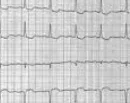What can be diagnosed on an echocardiogram?
What can be diagnosed on an echocardiogram?
The echocardiogram is an ultrasound examination of the heart, carried out at Alta Diagnósticos, that provides images obtained through sound. Using these images, the specialist can analyze whether the heart is beating normally and whether blood flow is adequate.
What is the electrocardiogram test for?
What is the best test to detect heart problems?
Exams that save: learn about heart preventatives
- Echocardiogram. …
- Ergometric Test (Stress Test) …
- Tomography of the heart and vessels. …
- Magnetic Resonance Imaging (MRI)…
- Digital angiography. …
- Resting electrocardiogram (ECG) …
- Chest X-ray. …
- Holter.
What can be detected in the electroencephalogram?
Electroencephalogram is the test that evaluates the electrical activity of the brain: using the impulses naturally generated by neurons, it is possible to assess the normality (or not) of the rhythm and intensity of brain activity.
How much does an electrocardiogram cost?
The price of the electrocardiogram can vary between 50 and 200 reais, depending on the clinic, hospital or cardiologist, however, if it is performed by the SUS, there is no charge.
How much does the enzyme test cost?
What is the value of an echocardiogram?
The price of the echocardiogram is approximately 80 reais, depending on the location where the exam will be carried out.
What is the value of an electroencephalogram exam?
This type of exam can be carried out free of charge by the SUS, as long as it has a medical indication, but it is also carried out in private exam clinics, with a price that can vary between 100 and 700 reais, depending on the type of encephalogram and the location where it is carried out. take the exam.
How long does an electroencephalogram exam take?
What is the value of a tomography?
The price of computed tomography varies between R$200 and R$700.00, however this exam is available through the SUS and there is no cost.
What is the awake electroencephalogram test for?
The electroencephalogram in sleep and wakefulness is a complete examination , which investigates all types of abnormalities involving brain activity. Neurological and psychiatric diseases and also sleep-related disorders can be diagnosed from it.
How is the awake electroencephalogram exam performed?
When does the electroencephalogram change?
If the result of the report is abnormal, it means that changes occurred in the amplitude and frequency of mental waves during wakefulness. The same can be recorded during sleep. These changes, called spikes, may indicate diseases such as epilepsy, stroke, tumors or brain injuries.
What does encephalogram mean?
Electroencephalogram is a test that evaluates the electrical activity of the brain. The procedure is quick, safe, painless and non-invasive. Also known as electroencephalography or EEG, it amplifies electrical impulses in the brain and records them graphically.
What is Cerebral Hyperpnea?
The electroencephalogram is an exam to check the electrical functional activity of the brain, being carried out at the Instituto Cardeal with a high-tech computerized system, during wakefulness and sleep, with intermittent light stimulation (photostimulation) and forced breathing ( hyperpnea ).
What does irritative activity on the electroencephalogram mean?
Irritant activity — This is the name given to the change characterized by the presence of spikes. Polytips— Refers to a group of spikes.
What does slow waves mean on the electroencephalogram?
Slow waves : the presence of slow electrical activity (mainly delta waves ) (Figure 4) is generally related to illnesses that cause brain pain. They can occur in neoplasms, vascular diseases, inflammatory diseases, particularly encephalitis.
What does sharp waves mean on the electroencephalogram?
e.g., epileptiform sharp waves ) or diagnostics (e.g., spike discharges and waves at 3 Hz for absence epilepsy, periodic sharp waves at 1 Hz for Creutzfeldt-Jakob disease). EEG is particularly useful for evaluating episodic loss of consciousness of unknown etiology.
What is brain slowing?
Focal slowing suggests a dysfunction located in the brain parenchyma and is common in focal seizure disorders, brain tumors , inflammatory processes and vascular malformations (MERRITt, 2007; SPENCE & SCHNEIDER, 2009; FONSECA et al., 2011).
What does diffuse disorganization of brain electrical activity mean?
We say that there is diffuse disorganization of brain electrical activity when there is an abnormal distribution of these rhythms, frequencies and elements, diffusely over the regions of the brain studied with the electrodes, moving away from what we would expect to find in case of normality.
What is diffuse paroxysmal activity?
Paroxysmal attacks or paroxysms are a sudden intensification or recurrence of symptoms, such as a spasm or seizure. These short, frequent and stereotyped symptoms can be observed in various clinical conditions.
What is beta rhythm?
The beta rhythm is characterized by an increased number of cycles (16 to 30 c/s), with lower amplitude. It corresponds to the state of attention, with eyes open and the paradoxical sleep phase.
What is irregular alpha rhythm?
This rhythm , which is typical of wakefulness, that is, accelerated, can remain in the most varied phases of sleep, even in slow wave sleep, which is the phase where brain waves are normally slower and thus disrupt the quality of sleep, leading to a feeling of non-restorative sleep.
What is Sleep Graphoelements?
Analytical studies of the graphoelements of the electroencephalogram in sleep : sleep spindles , vertex sharp waves and the frequency and amplitude gradient, as indicators of neurological impairment in children.
What is quantitative EEG?
The electroencephalogram ( eeg ) is an exam that aims to measure the electrical activity of the brain, allowing the diagnosis of any neurological abnormalities that may affect the patient and affect their health.
What is the difference between electroencephalogram and brain mapping?
What are the differences between the electroencephalogram and brain mapping ? The electroencephalogram with brain mapping differs from other EEGs due to the intensive use of technology that allows the generation of images with a better level of quality of the frontal, parietal, occipital and temporal regions.
